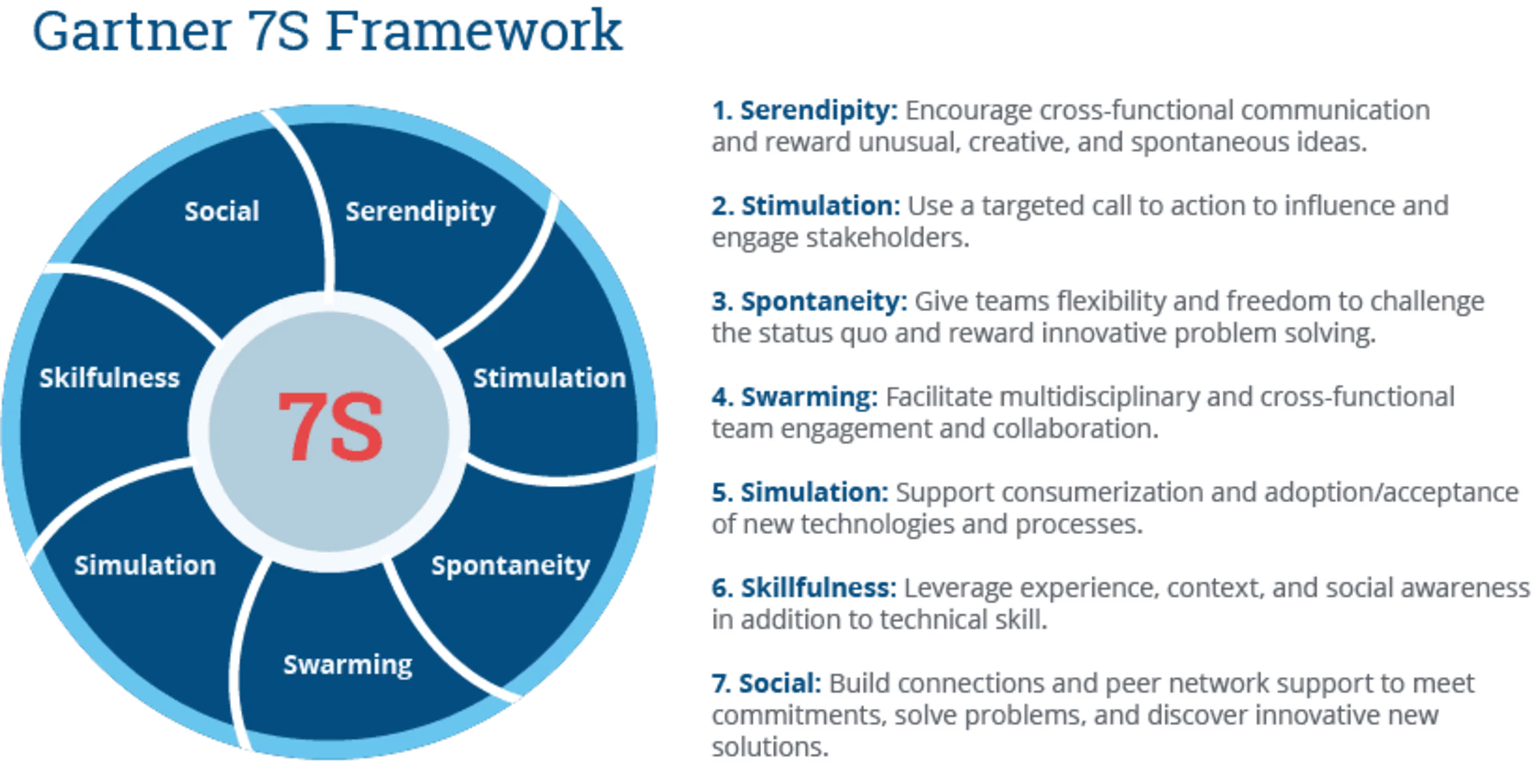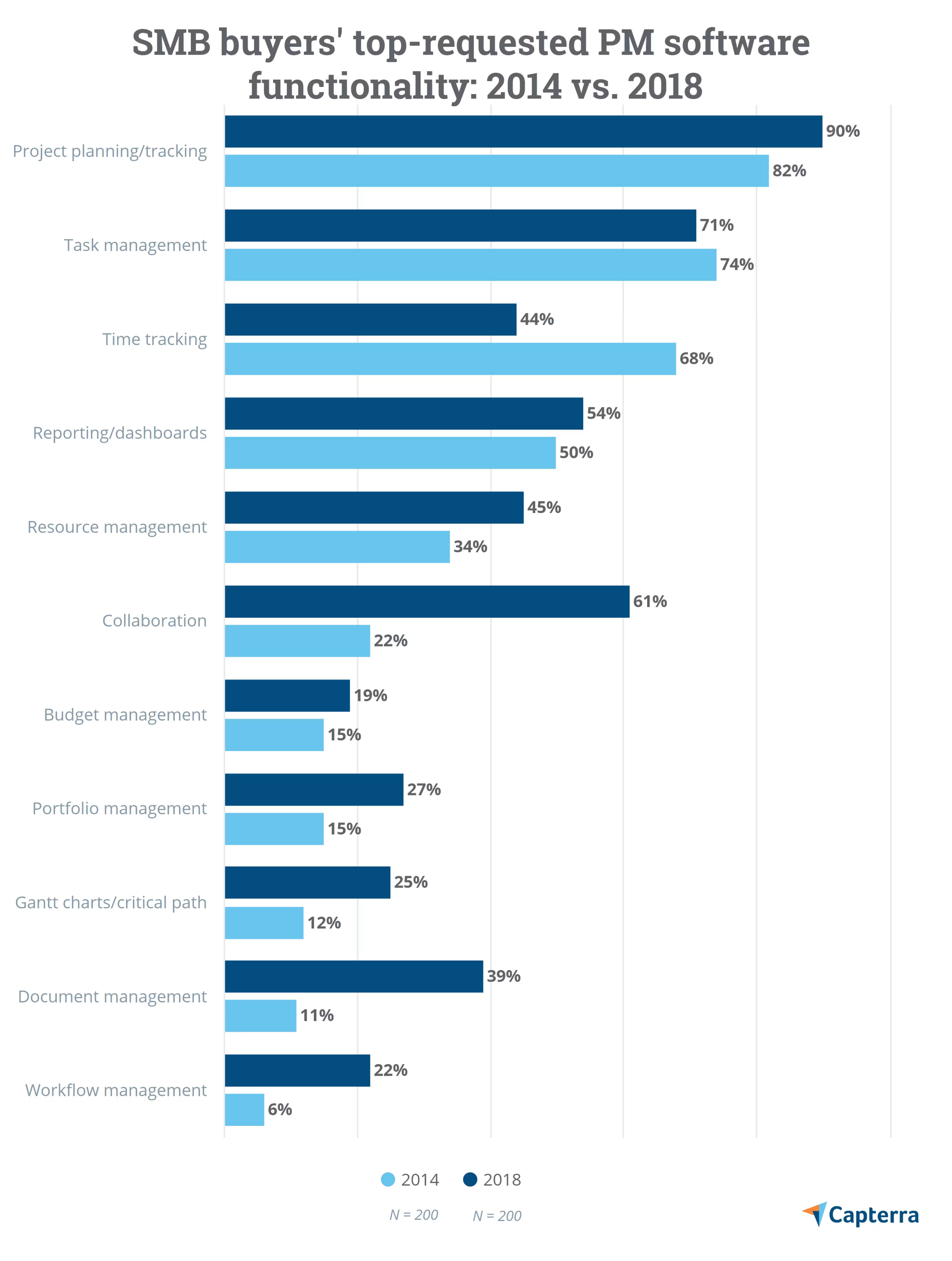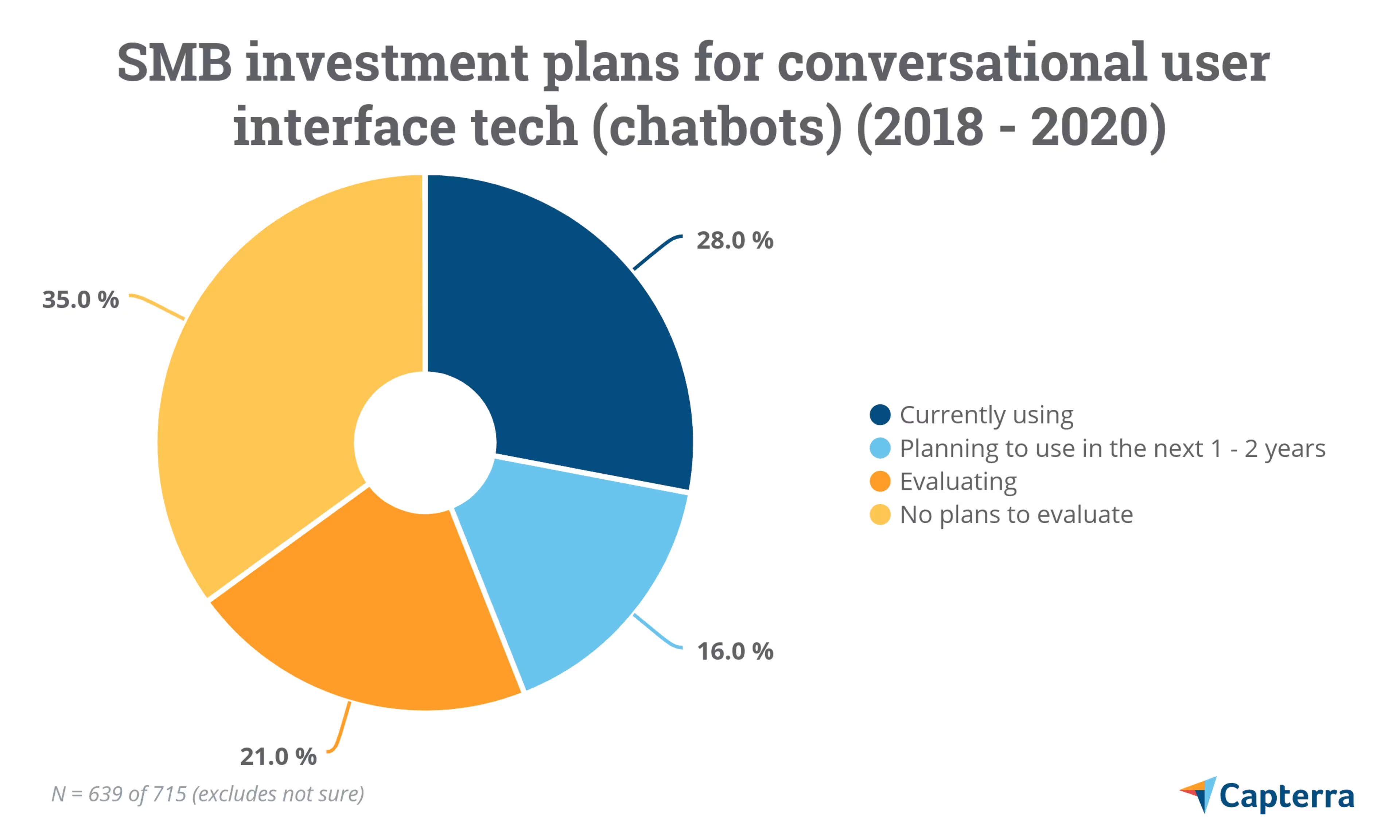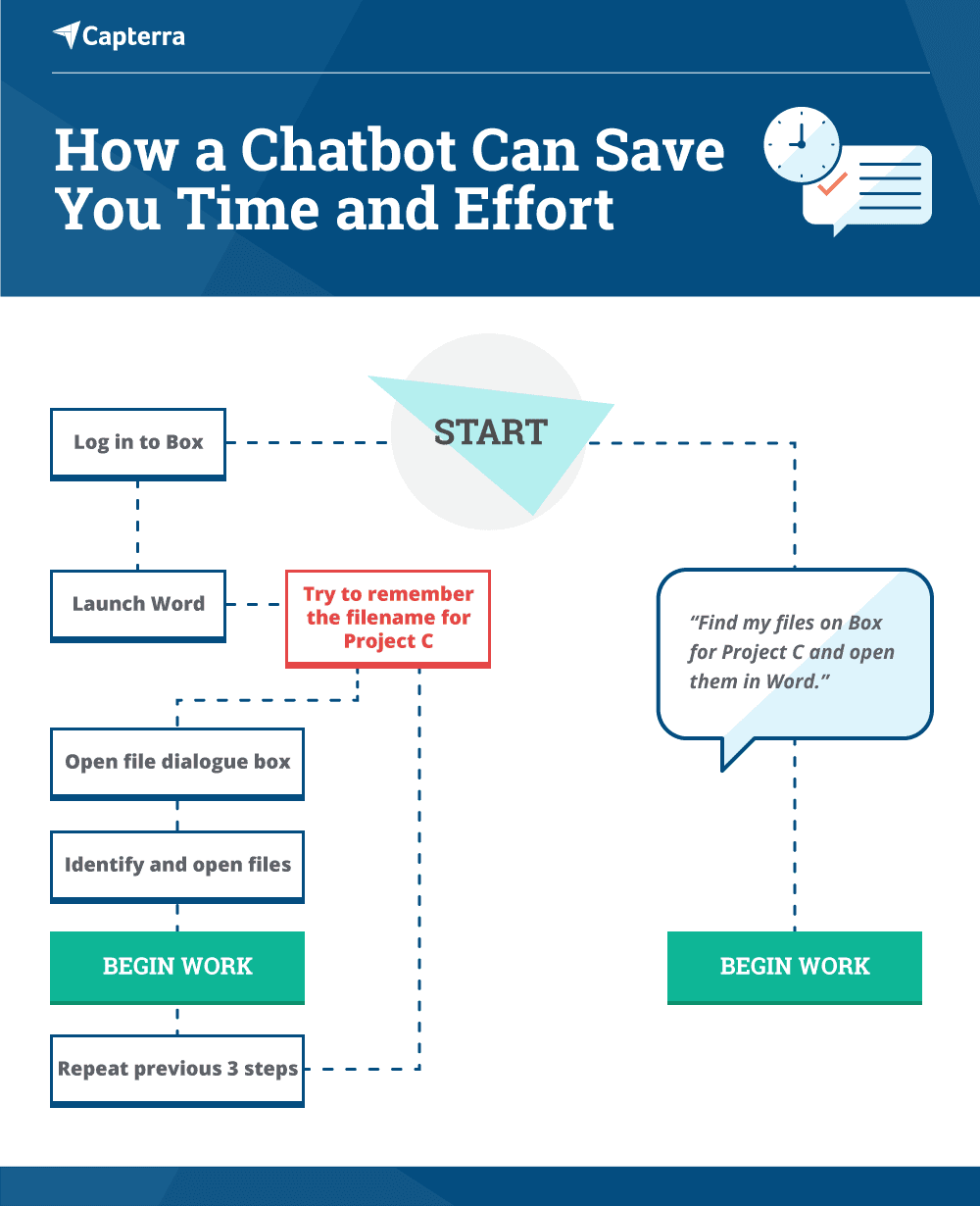Staying on top of current project management trends—and trying to get in front of what's coming down the road—is critical for project teams as they strive for continuous improvement and value delivery.
But getting executive buy-in to invest in project management (PM) technology trends isn't always easy.

According to Capterra's 2018 Top Tech Trends survey, 4% of small and midsize business (SMB) leaders don't consider technology trends and advancements when conducting strategic planning, and 17% consider them but say they aren't a major factor.
Even if executives at your SMB are among those who do consider technology trends an important factor in strategic planning, how do you know which PM trends, in an ever-evolving industry, are worth pitching them?
Don't worry, we've done that legwork for you. Let's look at five PM trends that are most relevant to SMBs in 2019, paired with some tips on how your SMB can start leveraging these trends today.
Here are the project management trends we'll cover:
#1: Experience trumps certifications; accidental project managers step into the limelight
WHAT ARE ACCIDENTAL PROJECT MANAGERS?
“Accidental project managers" are individuals who lead and collaborate on projects but lack formal training, certification, or the official title of “project manager." In small businesses especially, where accredited project professionals are few and far between, accidental project managers are the norm.
WHY IT'S A TREND FOR 2019
A 2018 study on collaboration by Planview found that two out of three participants manage projects as part of their role but aren't project management certified. More than one-third of those respondents also lack an official “project management" title or role.
Accidental project managers aren't exactly on the rise, it's more that they're coming into the limelight and being recognized for the role they've always played in organizations.
Hand-in-hand with this, PM certifications are becoming irrelevant as more and more organizations recognize that experience in managing and controlling change is more important than whether someone is certified.
“In the face of transformational efforts, the ability to control and manage the introduction and impact of change will be a business-critical skill set—far more than being PMP- or PRINCE2-certified in a collection of practices that are rapidly becoming irrelevant."
—Gartner Research VP Michael Hanford in "Where Your PPM Career Won't Be in 2020: Project Managers Must Reinvent Themselves for the Digital Future" (full report available to Gartner clients)
HOW TO LEVERAGE THIS TREND AT YOUR SMB
Foster a leadership culture that supports and develops accidental project managers capable of driving operational change by:
Encouraging emergent leadership and innovation. Static leadership and processes leave organizations ill-equipped to respond to changing market conditions, while encouraging individuals to challenge the status quo improves morale and employee effectiveness.
Providing opportunities for employees to develop next-level soft skills. These are necessary skills for managing people, coordinating with stakeholders, and working on cross-functional teams. Facilitate development through mentorship programs, on-the-job training, or succession planning.
According to PMI's 2018 "Pulse of the Profession" report, organizations that take steps to mature their project talent, PM capabilities, and project culture achieve significantly higher project success rates (92% versus 32% for underperformers).
#2: Project management moves out of IT and into 'everywhere'
WHAT IS "PROJECT MANAGEMENT EVERYWHERE"?
Project management everywhere is what many experts (including Gartner) see as the next step in the industry's natural progression. It's a state where PM becomes a generalized skill set that is necessary across functions and departments and less of a specialized IT role.
WHY IT'S A TREND FOR 2019
According to Gartner's 2018 PPM Hype Cycle report, business unit spending on technology and services outside of IT is growing each year, partly as a result of traditional IT-run projects being seen as too slow (full research available to Gartner clients).
In response to that, and because of the speed at which businesses need to respond to changes brought on from digitalization, organizations are increasingly looking to mature their project management capability outside of IT.
Who is the target audience for this movement? According to analyst Mbula Schoen, author of Gartner's 2018 PPM Hype Cycle report, “Organizations in which leaders frequently find themselves in the roles of executive project sponsor."
In other words: small businesses.
HOW TO LEVERAGE THIS TREND AT YOUR SMB
This approach requires “significant leadership commitment," according to analyst Mbula Schoen—not just to expand and relocate project management expertise from just inside IT, but also to accept that individuals throughout the business can and must learn what is needed to support or run a project.
We like to call this process “transforming staff into project ninjas." You can develop project ninjas at your SMB by following Gartner's 7S framework, which we've recently contextualized for small businesses here.
This framework consists of seven behavioral elements designed to help organizations set up a holistic project management structure, develop their project talent, and mature their project management capability:

Gartner's 7S framework for developing soft skills to lead project teams (Source; full report available to Gartner clients)
#3: Collaboration tools become the go-to business software
WHAT ARE COLLABORATION TOOLS?
Collaboration tools connect users and enable them to communicate (typically through chat and/or videoconferencing) and share files in real time. They are especially beneficial for organizations with a workforce across multiple locations and time zones.
Businesses can purchase stand-alone collaboration tools, such as Slack or Flock, or purchase a larger project management solution with built-in collaboration functionality.
WHY IT'S A TREND FOR 2019
As the leading online resource for business software buyers, we've helped thousands of SMBs find the right PM tools for their business needs. In analyzing these interactions with prospective PM software buyers, we've seen requests for collaboration tools more than double in the last five years, from 22% in 2014 up to 61% in 2018.
This makes collaboration the third most-requested capability by project teams, behind project planning/tracking (90%) and task management (71%)—and we expect this number to increase in 2019.

Source: Technology and Project Management: What Small Businesses Can Learn From Their Peers' Investments
HOW TO LEVERAGE THIS TREND AT YOUR SMB
Collaboration tools can have an immense impact on your team—both positive and negative.
A McKinsey study found that over 60% of an employee's time is spent on non role-specific tasks, such as answering email and searching for/gathering information. Deploying the right tools in these areas can result in productivity gains of 20 to 25%.
Deploying the wrong tools (or too many tools, or tools that overlap in function), however, can have the opposite effect. Planview's 2018 study on collaboration found that ineffective collaboration practices—think reliance on email or failing to centralize project info—can result in wasted time equal to nine workweeks each year.
For effective collaboration, project teams need to create—and abide by—a communication plan and tool hierarchy that addresses which tool they should use for which type of communication.
Consider using chat for anything not urgent or informal, using email for more formal inquiries, and having all project-related conversations in your shared PM tool.
Then, take appropriate steps to enforce those guidelines. If someone chats you about a project, ask them to resend that info to the team in an email or post it to your shared PM tool.
#4: The option to work remotely is no longer a perk, but a norm
WHAT ARE FLEXIBLE WORK ARRANGEMENTS?
Flexible work arrangements (FWA) are a type of benefits offering where employees are given the option of working different hours than the traditional “9 a.m. to 5 p.m." schedule, or from a different location than the office.
WHY IT'S A TREND FOR 2019
According to the Society for Human Resource Management (SHRM) in its 2018 Employee Benefits report, employers are increasingly offering FWAs as a competitive advantage to retain current staff and attract new talent.
When you look at telecommuting specifically, the number of businesses offering employees the option of working remotely either full time, part time, or on an ad-hoc basis has increased significantly in the last five years, from 59% in 2014 to 70% in 2018.
The bottom line: If you don't offer FWA or if your flexible work option isn't as attractive as your competitors, employees won't stick around:
A Gallup study found that 51% of employees would leave for a job that offered them flexible work hours, and 37% would leave for a job that offered the option to work remotely at least part time.
HOW TO LEVERAGE THIS TREND AT YOUR SMB
It's no longer a question of whether or not you should offer FWAs such as telecommuting (you should), but rather what steps should you take to ensure remote workers are set up for success.
This means setting the right expectations, providing the right tools, and giving them guidance as to your desired frequency for communication and which tool they should use for which communication.
Here's an example of specific guidance. When conducting team meetings, ask all employees—both co-located and remote—to dial into a video call. This ensures that everyone experiences the meeting the same way; remote and co-located employees can contribute to the discussion equally, hear and respond to verbal cues, and see and respond to nonverbal cues without leaving remote workers at a disadvantage.

Videoconferencing using Skype (Source)
Additionally, look for project managers with experience leading remote teams or managing distributed workers. Distance in time and place adds significant complexity to projects, and you'd be doing a disservice to managers and workers alike to assume the techniques, tools, and soft skills needed to manage co-located employees are the same as those needed to manage remote workers.
Want more best practices for leading remote teams?
Before we move on, one final note: The increased use of collaboration tools mirrors the increase in the number of employers offering remote work options. This tech makes it possible for remote and co-located employees alike to stay connected and collaborate in real time across locations and time zones. If you're going to offer FWAs, you need to invest in collaboration software.
#5: Millennials want to use chatbots
WHAT ARE CHATBOTS?
Chatbots, also known as “conversational user interface," fall under the AI umbrella. These bots are a computer program that use natural language processing to map a spoke or written word to intent.
PM bots enable a new way for PM tools to integrate with other application areas, such as collaboration. They listen and “wake up" when they observe certain things happening, then recommend a specific action users should take.
WHY IT'S A TREND FOR 2019
Millennials are the largest generation in the U.S. labor force, and research shows that this generation in particular wants to use chatbots (65% of Millennials compared to 55% of all Americans).
However, Capterra's 2018 Top Tech trends survey found that just 44% of U.S. SMBs are currently using or planning to invest in chatbots by 2020. This shows a sizable gap between tech workers' wants and tech SMBs' plans for investment.

This is a problem. According to Gallup's 2017 State of the American workplace report, the single biggest indicator of job stress or job satisfaction is whether employees have the tools they need to do their jobs well.
The right tools streamline role-specific tasks and cut down on the time required for non role-specific tasks (such as internal communication/collaboration, answering email, and tracking down information).
And for Millennials especially, chatbots are the right tools.
According to Van Baker, research vice president at Gartner, “Chatbots are time-saving and easy to interact with, as they use natural language processing, reduce error rates associated with humans, and improve customer engagement."
Baker provides the following example to demonstrate the time and effort that can be saved using a PM bot to track down information:
From 6 Actions to 1 Request: How a Chatbot Can Save You Time and Effort
John is trying to access files that are stored in Box Sync, a productivity tool that enables users to mirror data stored on Box to their desktop. To do this, John follows a six-step process. By using a chatbot, however, he only makes a single verbal request (assuming the chatbot supports his language).

Source: "Chatbots Will Appeal to Modern Workers", a Smarter with Gartner article.
HOW TO LEVERAGE THIS TREND AT YOUR SMB
It's likely that many SMB leaders still consider “conversational user interfaces," aka chatbots, to be future-tech, when in reality these tools are readily available in many PM solutions today.
Slack is a good example. Its Slackbot can troubleshoot basic questions, acting as a chat interface to the tutorial. Users can also chat at the Slackbot to set reminders, and set it to give automatic responses. So in a project management scenario, you could tell it to respond with the time of your weekly standup meeting anytime someones asks that question in a channel.
According to Pritam Tamang, project management analyst for Software Advice, these are the three most common use cases for small businesses adopting chatbots:
Evaluate your own needs and if chatbots can help your teams save time and effort, consider this tech a “must-have" (rather than “nice-to-have" capability), and evaluate tools accordingly.
What other project management trends will impact SMBs in 2019?
The PM trends listed above are those most likely to impact small businesses this year, are by no means the only trends shaping the industry.
Other notable shifts include:
The rise of the gig economy: 68% of organizations report using outsourced or contract project managers. (Source: PMI)
Agile predicted to overtake Waterfall as the prominent delivery method: “By 2023, Agile program and product management will replace project management as the dominant approach for effective enterprise change and outcomes." (Source: Gartner; Full report available to Gartner clients)
SMBs are increasingly adopting PM tech: 84% of SMBs are currently using, planning to use by 2020, or evaluating PM software. (Source: Capterra)
What do you think the biggest project management trends will be in 2019? Let me know in the comments!